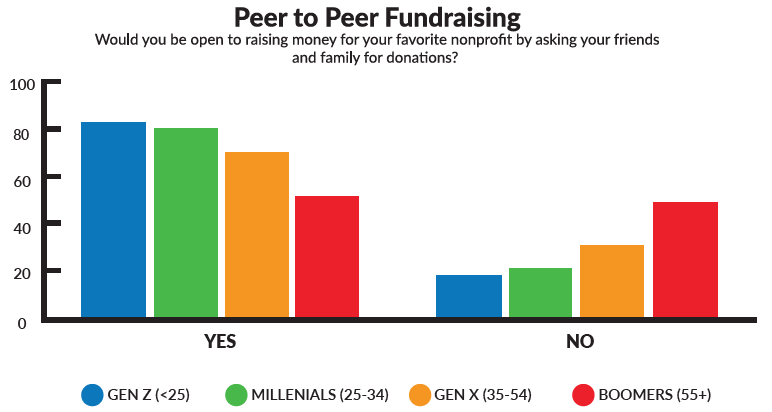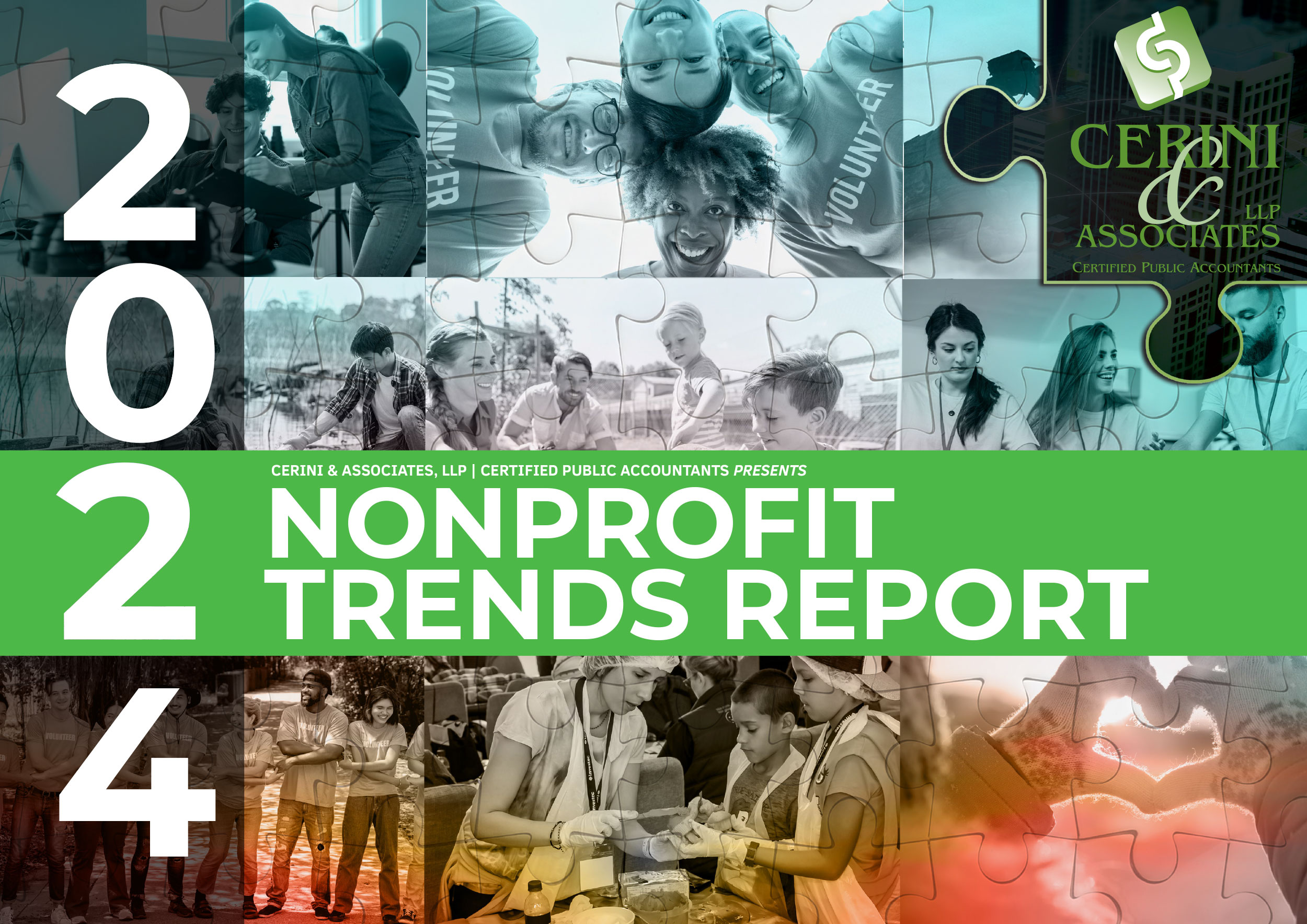As we embark on the journey through 2024, nonprofits are faced with an ever-evolving fundraising landscape, marked by dynamic shifts and emerging trends. In addition to the previously discussed strategies, several other factors will play a crucial role in shaping the trajectory of nonprofit fundraising efforts in the coming year.
1.) THE BOUNCE-BACK EFFECT:
Reversing the Giving Decline: In 2022, Giving USA reported a significant 10.4% decrease in charitable giving when adjusted for inflation. However, 2023 showed signs of recovery, projecting an increase of 5-6% in overall giving. Should the economy maintain its upward trajectory, 2024 is likely to witness further growth in charitable contributions, marking a positive reversal of the previous decline. Discussion of allowing charitable contributions for non-itemizers could spur fundraising even more.
2.) THE POLITICAL PULSE: ELECTION YEAR GIVING IN 2024:
With 2024 looming as a charged election year, political and voting rights organizations are poised to witness a spike in donations. Historically, election years have galvanized donors, and given the current heightened political climate, this trend is set to intensify. Nonprofits operating in these spheres should leverage this opportunity to advance their causes and expand their impacts.
3.) EMBRACING INCLUSIVITY: DIVERSITY IN LEADERSHIP AND DONORS:
The call for diverse board leadership and donor representation has been a high priority for many organizations over the past few years. The demand for inclusivity will remain a priority and cornerstone for organizations seeking to diversify their donor base and have a more profound impact. Embracing diversity ensures a broader perspective and a richer understanding of the communities served.
4.) THE RISE OF DONOR-ADVISED FUNDS:
Donor-advised funds (DAFs) are becoming a preferred giving vehicle for many donors as they offer flexibility, tax benefits, and the allure of strategic philanthropy. Their popularity is only expected to grow, making them a crucial consideration for nonprofits seeking diversified funding sources. Understanding how to engage with donors utilizing DAFs can unlock new avenues for financial support.
5.) THE GREAT WEALTH TRANSFER & PLANNED GIVING:
The baby boomer generation is amid a monumental wealth transfer to younger generations. This presents a golden opportunity for nonprofits to unlock the potential of planned giving and blended giving strategies, ensuring long-term financial stability and enduring donor engagement. Crafting compelling narratives around legacy giving will be essential in capturing this generational wealth transition.
6.) THE POWER OF CAMPAIGNS:
With their targeted approach and compelling narratives, campaigns have always been one of the most powerful tools in a fundraiser’s toolkit. As the economy strengthens and wealth is transferred between generations, campaigns will be more pivotal in rallying support and driving donations. Nonprofits should invest in strategic campaign planning to maximize their impact and reach.
7.) GENERATIONAL LEADERSHIP SHIFT:
The torch of board leadership is passing from older generations to their successors. This transition brings fresh perspectives, innovative strategies, and a renewed commitment to the organization’s mission. The board will need next-generation prospects on the bench as succession occurs at the board level. Nurturing and mentoring the next wave of leaders will be essential for organizational continuity and innovation.
8.) AI: FUNDRAISING’S SILENT REVOLUTION:
Artificial Intelligence (AI) is no longer a futuristic concept but a present-day reality. In fundraising, AI promises enhanced productivity, data-driven strategies, and personalized donor engagement. Organizations that harness the power of AI will undoubtedly be a step ahead in their fundraising endeavors, streamlining processes and improving the overall donor experience.
9.) THE WIDENING GAP: DISPARITIES IN GIVING:
The traditional 80/20 rule, where 80% of donations come from 20% of donors, is shifting towards a 90/10 divide. This growing disparity underscores the importance of nurturing major donors while cultivating a broader donor base. It is the key to ensuring sustainability and balance in philanthropic ecosystems. Nonprofits must adopt strategies that bridge this gap, ensuring a more inclusive and sustainable funding model.
10.) THE DOMINANCE OF INDIVIDUAL GIVING:
The Giving USA report highlighted that 64% of all donations came from individuals. This trend is set to persist, with major gifts offering the highest Return on Investment (ROI). For nonprofits, this means prioritizing individual donor relationships and crafting tailored strategies to nurture major gifts. Building strong connections with individual donors remains fundamental to a successful fundraising strategy.
11.) DIGITAL PHILANTHROPY TAKES CENTER STAGE:
In our increasingly interconnected world, digital philanthropy is witnessing a surge. The fusion of technology and altruism enables donors to contribute effortlessly. Crowdfunding platforms, blockchain-driven transparency, and virtual reality experiences that allow donors to witness the impact of their contributions firsthand are becoming central to philanthropic initiatives. Nonprofits must embrace digital strategies to meet donors where they are and provide seamless, immersive giving experiences.
12.) IMPACT INVESTING GAINS MOMENTUM:
The concept of “doing well by doing good” is becoming even more prevalent in 2024. Impact investing, where financial returns are combined with measurable social or environmental benefits, attracts socially conscious investors seeking both financial growth and positive global change. Nonprofits can align their missions with impact investors, emphasizing measurable outcomes and sustainable solutions.
13.) DECENTRALIZED PHILANTHROPY:
Blockchain technology continues to disrupt traditional philanthropy, introducing transparency and security. Decentralized autonomous organizations (DAOs) enable communities to collaborate, make decisions, and allocate resources collectively, promoting democratic giving and trust. Nonprofits can explore the potential of decentralized platforms to engage communities directly and foster a sense of shared responsibility.
14.) PERSONALIZED PHILANTHROPY JOURNEYS:
Donors now demand more than just transparency; they seek personalized experiences. Nonprofits are leveraging AI and data analytics to tailor their communications, offering donors the opportunity to engage in projects that align with their passions and values. Creating individualized philanthropy journeys fosters stronger connections and encourages long-term donor commitment.
15.) CIRCULAR PHILANTHROPY AND SUSTAINABILITY:
With growing environmental concerns, philanthropy is increasingly focusing on sustainability and circular economies. Donors are funding projects that aim to reduce waste, promote recycling, and support eco-friendly initiatives. Nonprofits should align their initiatives with sustainability goals to attract environmentally conscious donors and contribute to a greener future.
16.) COLLABORATIVE PHILANTHROPY ECOSYSTEMS:
Philanthropic organizations in 2024 are fostering greater collaboration. The focus is shifting from competition to synergy as nonprofits, governments, corporations, and individuals work together to address complex global challenges. Collaborative efforts amplify impact and create holistic solutions.
17.) PHILANTHROCAPITALISM EVOLVES:
The era of philanthrocapitalism continues to evolve as mega-philanthropists strategically allocate vast resources. The line between public and private sectors blurs, reshaping global social and economic systems. Nonprofits need to navigate this evolving landscape by understanding and adapting to new funding dynamics.
18.) VIRTUAL REALITY FOR EMPATHY AND EDUCATION:
Virtual reality is harnessed to cultivate empathy and awareness among donors. By immersing themselves in the stories of beneficiaries, donors gain a deeper understanding of the issues they are addressing, leading to more informed and compassionate giving. Nonprofits can use VR to create impactful storytelling experiences that resonate with donors on a profound level.
19.) INCLUSIVE GIVING AND DIVERSITY:
Diversity, equity, and inclusion (DEI) take center stage in philanthropy. Organizations prioritize diverse leadership, foster inclusive practices, and fund projects that address systemic inequalities. Ensuring that philanthropy benefits all is not just a moral imperative but a strategic necessity.
20.) DATA-DRIVEN PHILANTHROPY:
Data analytics play an increasingly pivotal role in philanthropic decision-making. Donors and organizations use data to measure the impact of their contributions, refine strategies, and optimize resource allocation. Nonprofits should invest in robust data analytics capabilities to demonstrate accountability and maximize their effectiveness.
21.) PHILANTHROPY IN THE METAVERSE:
As the metaverse emerges, philanthropy follows suit. Virtual worlds provide new avenues for charitable giving and community engagement. Expect to see digital charity events, virtual fundraisers, and immersive philanthropic experiences in this novel landscape. Nonprofits can explore innovative ways to leverage the metaverse for fundraising and community-building.
22.) PEER TO PEER FUNDRAISING:
Peer-to-peer fundraising is a dynamic strategy where supporters raise funds on behalf of a nonprofit. Beyond traditional events, it offers diverse formats like “It Takes a Village: Using Peer-to-Peer to End Homelessness.” Donors create individual or team pages, leveraging their networks to collect funds. Qgiv reports that peer-to-peer drives 50% of new donor interactions, making it a valuable tool for acquiring new donors and building a major gift pipeline for nonprofits.

In conclusion, the philanthropic landscape of 2024 is dynamic and multifaceted. Nonprofit organizations must remain agile, embrace technological advancements, and align their strategies with the evolving preferences and priorities of donors to maximize their impact and drive positive change in an ever-changing world.

THIS ARTICLE WAS ALSO FEATURED IN OUR 2024 NONPROFIT TRENDS GUIDE. READ THE ARTICLE AND MUCH MORE RELATED CONTENT HERE!

Mahnaz Cavalluzzi, CPA
Director
Mahnaz has been a member of Cerini & Associates’ audit and consulting practice area for over 8 years where she focuses on serving nonprofit organizations, education, and healthcare clientele. Mahnaz has experience in financial statement audits, financial statement reviews, tax return preparation, cost report filing, and other consulting. Mahnaz brings her expertise, diversified background, and helpful approach to all of her engagements.

